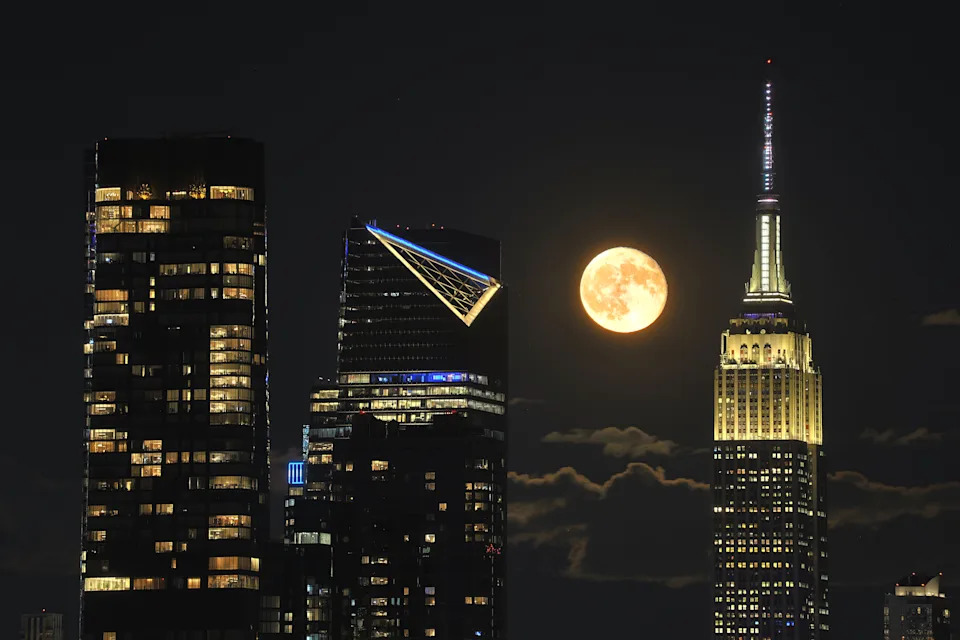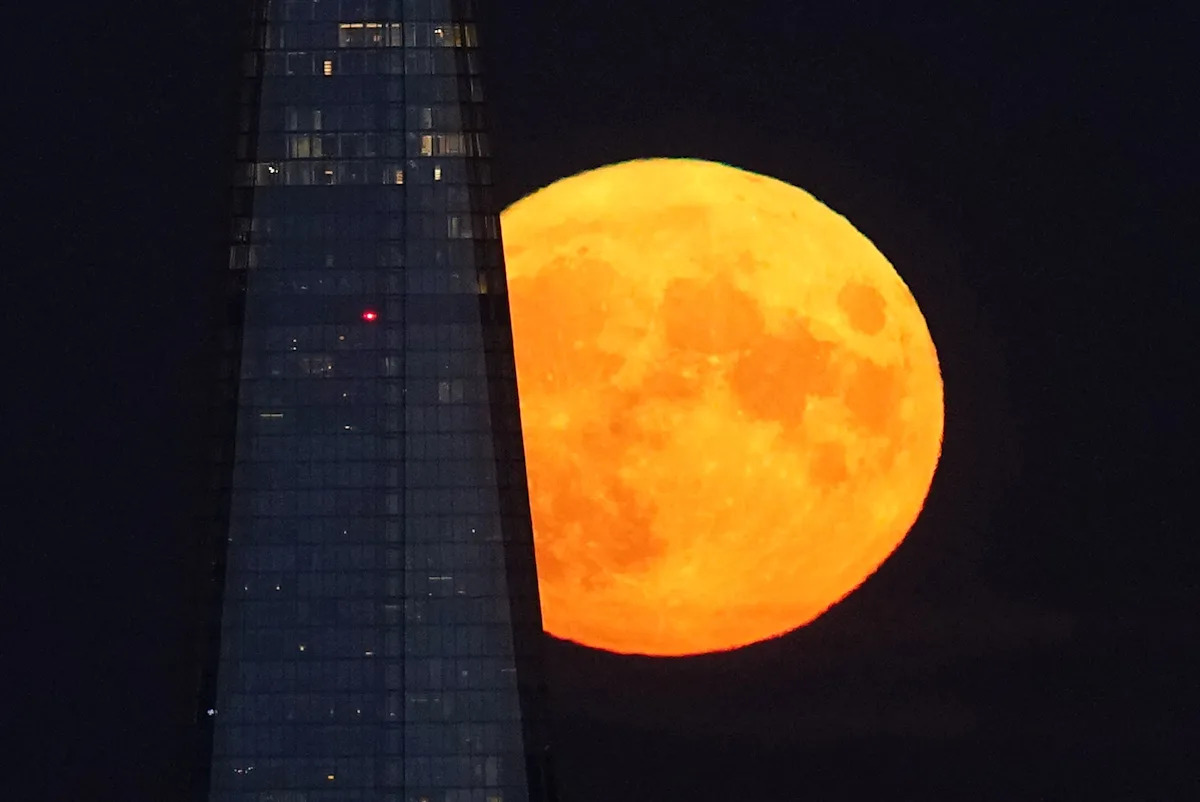This week, the sturgeon moon will shine out over Britain in the last full moon of summer – but it’s a rather unusual one.
While the moon is full, technically speaking on Saturday, 9 August, it will also appear full at the same time on Friday.
The reason is that in August, the moon lies low in the southern sky, according to Live Science, and the ‘time difference’ of moonrise between successive nights is relatively short – so the moon will appear full on both nights.
When will the sturgeon moon rise?
The moon will peak on the 9 August at 8.55am, but this means that it should be visible at dusk on both Friday and Saturday nights – and will still look impressive on Sunday.
BBC Sky at Night magazine advises: “If you do find a great spot to observe the sturgeon moon … you can see it again, weather permitting of course.
“There will be a very subtle difference in timing and position, so perhaps this is something you could try to observe for yourself.”
Why is it called the sturgeon moon?
The names we use for full moons today (such as ‘cold moon’, ‘wolf moon’ and ‘harvest moon’) come to us indirectly from Native American traditions.
NASA’s Gordon Johnston wrote: “In the 1930s the Maine Farmer’s Almanac began publishing ‘Indian’ names for the full moons, tying these names to the European months.
The sturgeon moon is named because the fish appears in large numbers in summer, and was named by North American fishing tribes.
It’s also sometimes known as the green corn moon, the grain moon (due to the harvest) or the red moon due to the reddish colour it can appear on summer nights.
What is a full moon?
Full moons occur when the Earth is directly in line between the moon and the sun.
They take place when the moon is completely illuminated by the sun’s rays.
Why will the moon be lower in the sky?
The moon will be low in the sky due to the fact that from the Northern Hemisphere, the sun is high in the sky during the day due to the tilt of Earth’s axis, with the moon hugging the southern horizon all night.
Another reason the moon will appear lower in the sky due to last December’s major lunar standstill, which operates on an 18.6 year cycle.
This means the moon’s path across the sky is longer: ‘major lunar standstills’ occur when the tilt of the moon and the tilt of the Earth coincide.
Archaeologist and historian Jennifer Wexler said: “Over several years, the limits of moonrise and moonset themselves gradually change, until they reach the point where the northernmost and southernmost moonrise and moonset positions are at their maximum distance apart on the horizon.

A 97% illuminated sturgeon moon rises behind the Empire State Building in New York City. (Getty Images)
“This two-year period is what is known as a major lunar standstill, or lunistice, and it only occurs every 18.6 years.
“Once a major standstill is reached, the distance between northernmost and southernmost moonrise and moonset can be exceptionally far apart, and it stays that way for around two years.”
Why will it be bigger and look orange?
The moon will not actually be bigger, but will appear bigger because it is near the horizon, which makes people perceive it as larger, relatively speaking.
The moon illusion occurs when the moon is near the horizon, and makes our satellite appear much bigger.
The phenomenon has been known since ancient times but is still not fully understood.
When the moon is low in the sky, it can appear reddish or an orange colour from Earth.
This is caused by sunlight passing through Earth’s atmosphere after bouncing off the moon.

